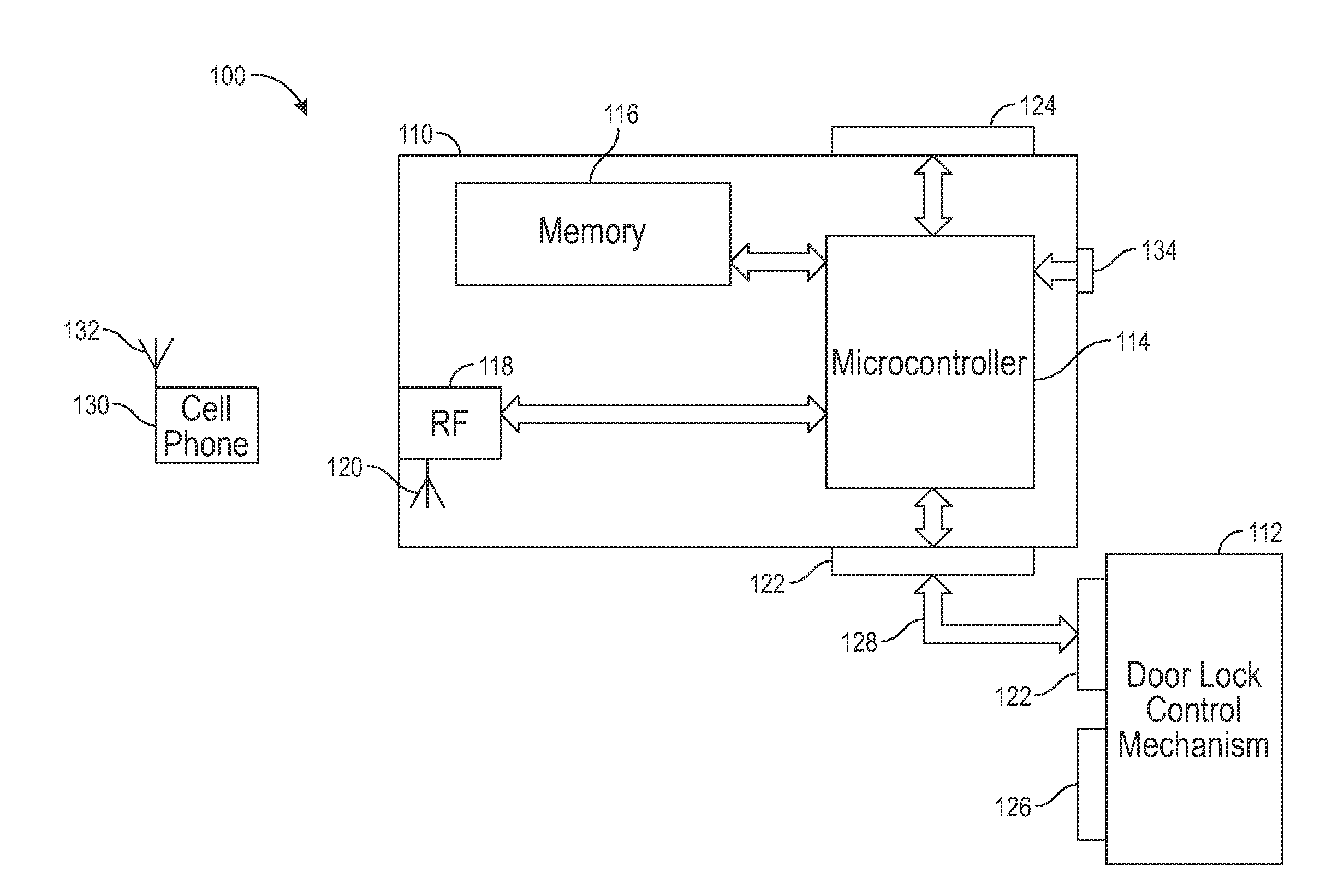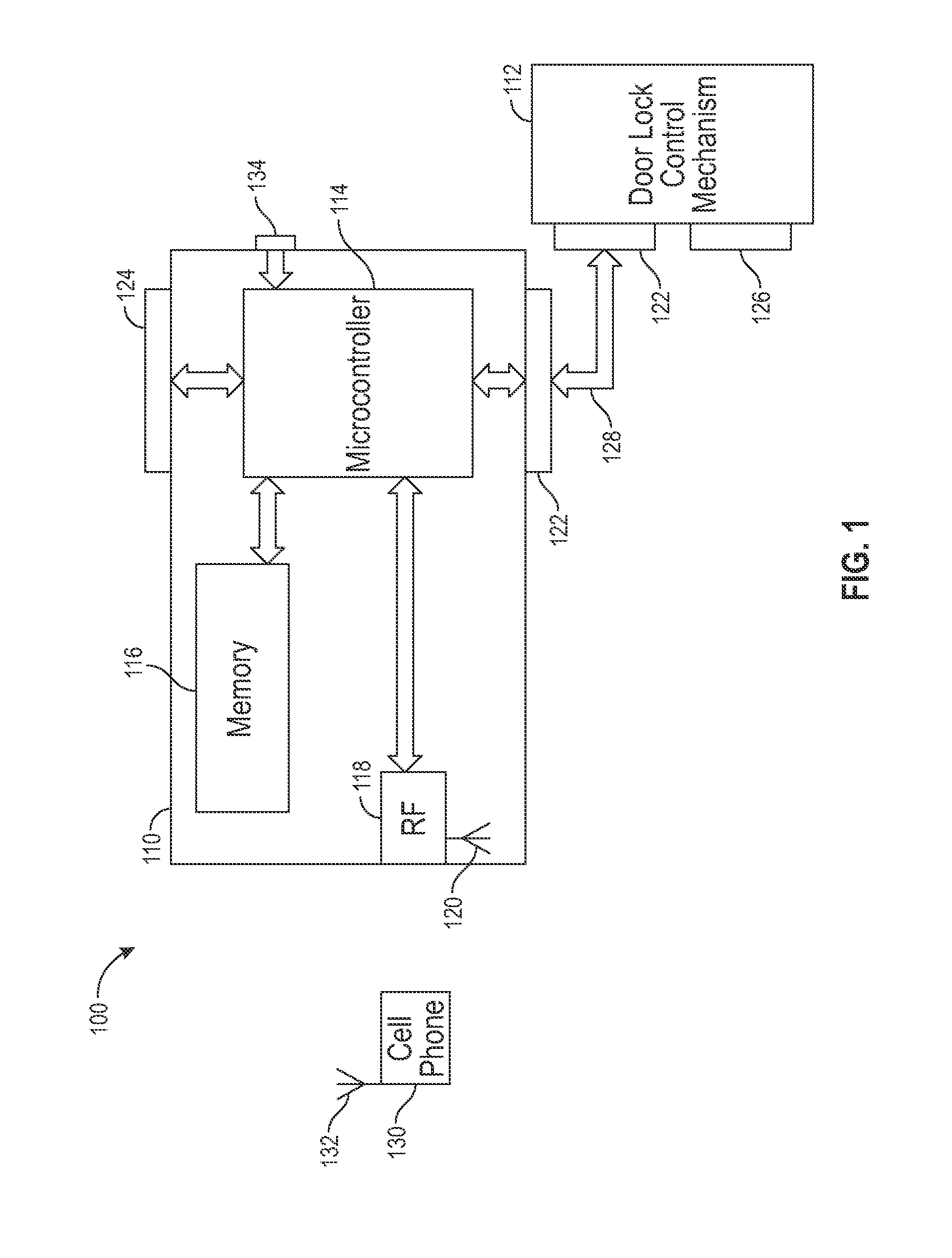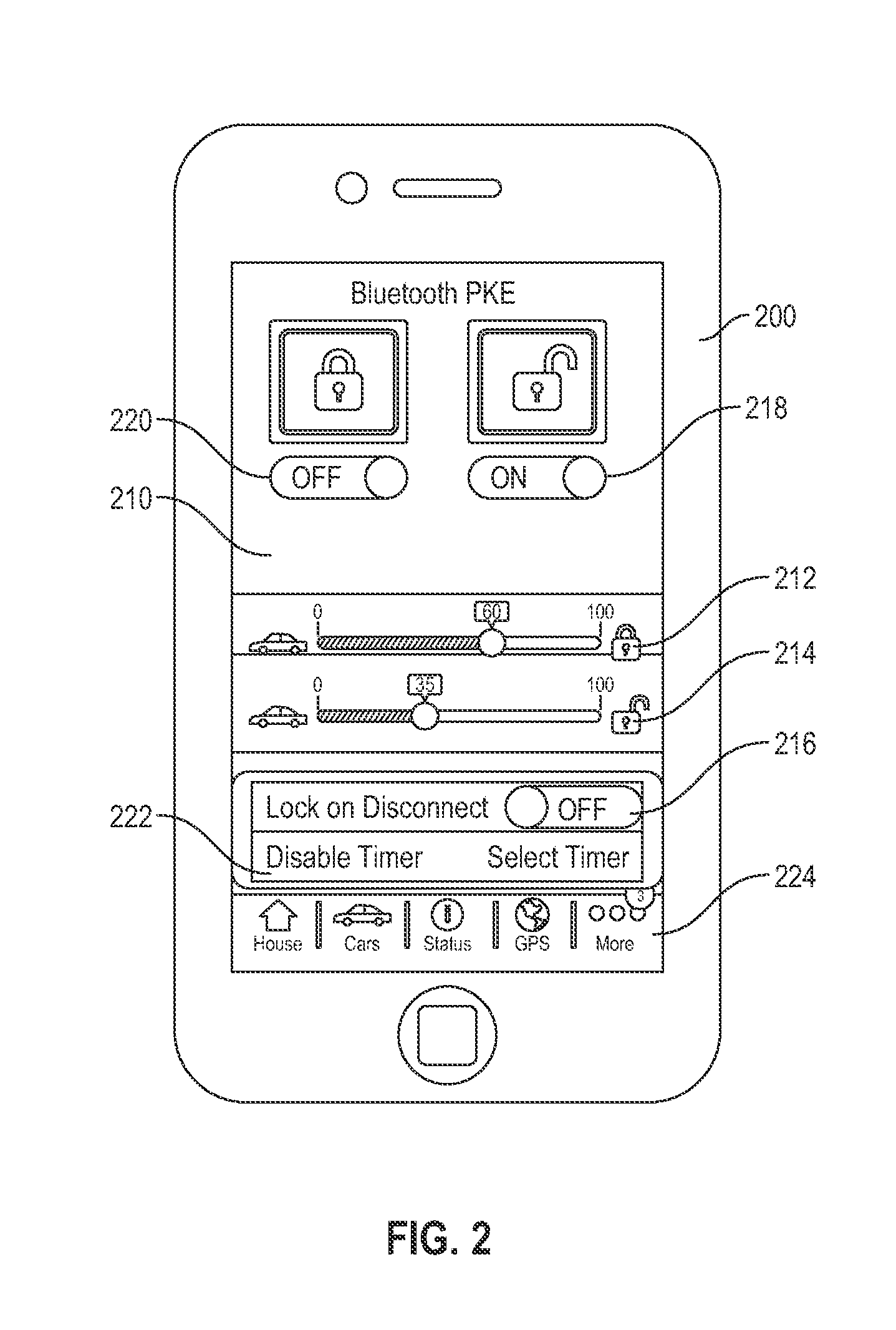Smartphone based passive keyless entry system
- Summary
- Abstract
- Description
- Claims
- Application Information
AI Technical Summary
Benefits of technology
Problems solved by technology
Method used
Image
Examples
Embodiment Construction
[0014]The present invention provides for a passive keyless entry system and method that provides for setting the distance and conditions for triggering a lock mechanism using a short range RF enabled smart phone paired with an enabled transceiver module installed in a vehicle, building or other secured access point. Example embodiments are described herein. Those of ordinary skill in the art will realize that the following descriptions are illustrative only and are not intended to be in any way limiting. Other embodiments will readily suggest themselves to such skilled persons having the benefit of this disclosure. Reference will now be made in detail to implementations of the example embodiments as illustrated in the accompanying drawings. The same reference indicators may be used throughout the drawings and will refer to the same or like items.
[0015]Now with reference to the various figures, FIG. 1, is an exemplary embodiment of the inventive subject matter providing a passive key...
PUM
 Login to View More
Login to View More Abstract
Description
Claims
Application Information
 Login to View More
Login to View More - Generate Ideas
- Intellectual Property
- Life Sciences
- Materials
- Tech Scout
- Unparalleled Data Quality
- Higher Quality Content
- 60% Fewer Hallucinations
Browse by: Latest US Patents, China's latest patents, Technical Efficacy Thesaurus, Application Domain, Technology Topic, Popular Technical Reports.
© 2025 PatSnap. All rights reserved.Legal|Privacy policy|Modern Slavery Act Transparency Statement|Sitemap|About US| Contact US: help@patsnap.com



